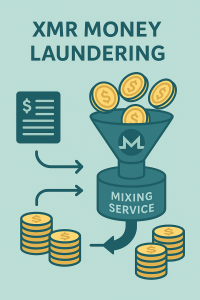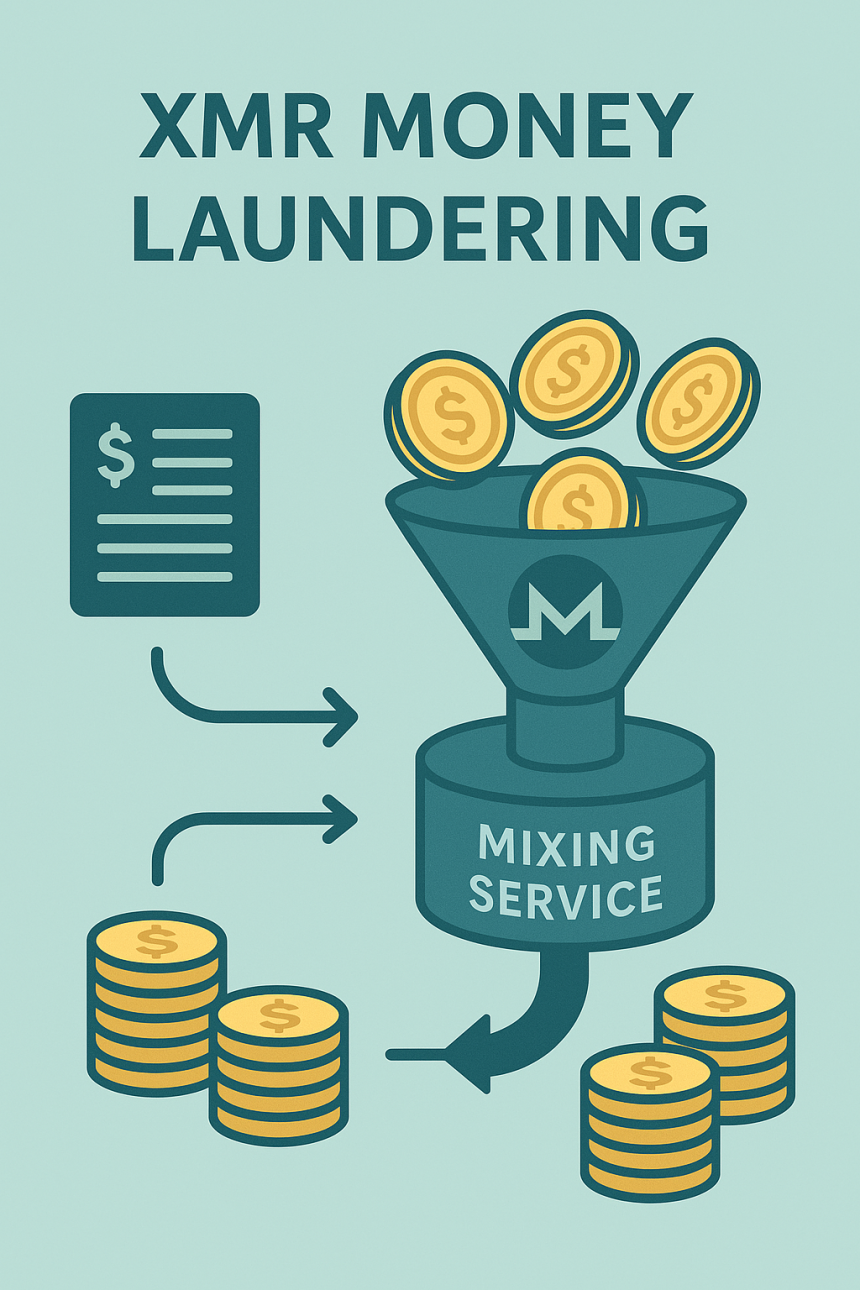Key Mechanics Explained
Monero (XMR) is increasingly being utilized by cryptocurrency mixers to facilitate money laundering due to its strong privacy and anonymity features. Understanding how these mixers exploit Monero can help users recognize and mitigate associated AML risks.

Why Monero?
Monero employs advanced cryptographic technologies like ring signatures, stealth addresses, and Ring Confidential Transactions (RingCT). These technologies obscure transaction amounts, senders, and recipients, making it nearly impossible to trace funds.
Mechanics Used by Mixers
1. Transaction Pooling
Mixers collect Monero deposits from numerous users into a single large transaction pool. Funds within this pool are then redistributed in randomized amounts and timings, effectively breaking any clear link between deposits and withdrawals.
2. Cross-Cryptocurrency Mixing
Many mixers accept other cryptocurrencies, converting them to Monero during the mixing process to further complicate tracing. Funds are mixed within the Monero blockchain and later converted back into more traceable cryptocurrencies.
3. Layered Transactions
Advanced mixers perform multiple layers of Monero transactions, further obfuscating the source and destination of funds. Each layer adds complexity, rendering AML investigations significantly more challenging.
AML Challenges and Regulatory Scrutiny
The opaque nature of Monero transactions poses substantial AML compliance challenges. Regulators globally, including the FATF, closely scrutinize activities involving Monero mixers, leading to increased enforcement and scrutiny on exchanges and services interacting with XMR.
Awareness of these mechanics can aid users and compliance teams in identifying suspicious transactions, helping mitigate money laundering risks.















